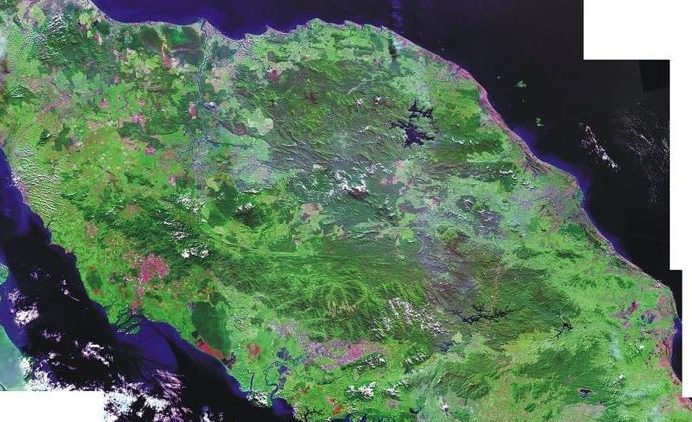Malaysia’s Madani Adopted Village program on September 28, 2025 disbursed 2.138 million ringgit ($507,347) to fund agriculture in Tasek Gelugor on Penang island.
This follows a roll out in 42 villages elsewhere early 2025 at 100 million ringgit ($27.7 million), per the Ministry of Finance.
The current drive targets farming/animal husbandry activities in the kampungs (villages) of Guar Petai, Labuh Banting, Tok Jawa and Baru in Tasek Gelugor.
The Minister of Agriculture and Food Security M. Sabu cites his docket is handling these four areas covering 112.3 hectares.
“Usually, one ministry has one Madani….but KPKM has four villages,” Sabu said, referring to his ministry’s Malay initials.
The minister added that 1.878 million ($445,649) and 260,514 ringgit ($62,769) will develop farming and livestock sectors, respectively.
So far, 10 animal breeders in the four hamlets have tapped the livestock fund for infrastructural, breeding, tool and feed costs.
Developing a Typical Madani Village
The developmental initiative aims to alleviate the farm expenditure burden and help livestock farmers increase productivity and competitiveness.
Specifically, the kitty will assist level off 150 hectares of arable land and maintain a 20-kilometer water ditch.
The rest will go into tractor and drone procurement as well as input support to combat keladi agas, a new parasitic weed.
Some of the funds will also enable young people tap new techs including the Internet of Things, which the minister encourages them to exploit.
Upon realization, these projects will have enhanced the primary aim of the Madani Adopted Village agriculture model of bridging rural and urban development.
The national government announced in its 2025 Budget a yearlong coverage of 200 hamlets, each receiving 1 million ringgit ($237,300).
Finished projects have so far focused on high impact water, solar lighting, road infrastructure and farm input provisions. And per the below stats, Madani is a brilliant idea equating agriculture across the far-flung islands of the Malay Peninsula.
Malaysia Agriculture Statistics
Though a highly developed country, Malaysia still depended on agriculture for 12% of its GDP before 2000, according to the National Encyclopedia. By 2025, agriculture was representing 7 to 8% of the GDP and was readying to bring precision technologies to 70% of farmers. Fishing and livestock keeping, alongside palm oil, rice, cocoa and rubber cultivation represent primary agricultural activities. Hence, agriculture and forestry employ 10% of the working population, per the International Trade Administration (ITA).
Since East and West Malaysia have a sea gulf of 650 km between them, the government tries to balance agricultural development across. The most recent idea is the peninsula Kampung Angkat Madani or simply Madani Adopted Village. It is a development initiative that targets mainly rural agriculture in the country. Each ministry has at least one village per region to fund through lighting, agricultural, schooling and similar projects. The 2025 annual budget for Madani was 200 million ringgit ($47.46 million) while that for each village a million ringgit.
Is Malaysia a major player in international agriculture trade?
Given its innovativeness, Malaysia remains an important party in world trade. By 2022, agricultural trade had hit $61.3 billion, out of which $37.4 billion made up exports and $23.9 billion imports.
How big is the Malay palm oil sector?
Malaysia leads in the global production of palm oil. While 85% of the output was for export before 2000, this portion has reduced significantly after focus turned to local biofuel feedstock. But the country still produces 26% and exports 34% of worldwide palm oil, as of 2020.
